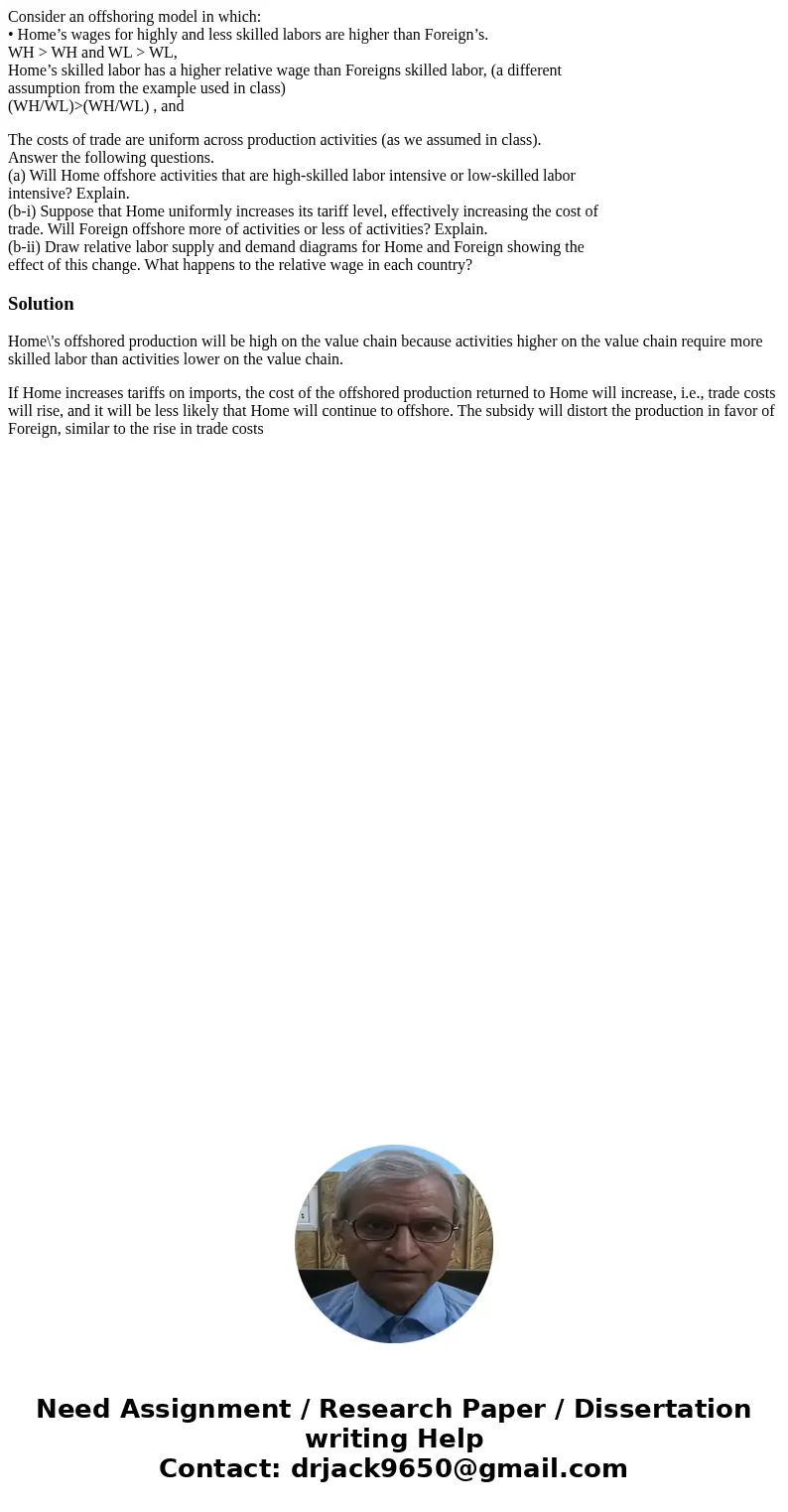Consider an offshoring model in which Homes wages for highl
Consider an offshoring model in which:
• Home’s wages for highly and less skilled labors are higher than Foreign’s.
WH > WH and WL > WL,
Home’s skilled labor has a higher relative wage than Foreigns skilled labor, (a different
assumption from the example used in class)
(WH/WL)>(WH/WL) , and
The costs of trade are uniform across production activities (as we assumed in class).
Answer the following questions.
(a) Will Home offshore activities that are high-skilled labor intensive or low-skilled labor
intensive? Explain.
(b-i) Suppose that Home uniformly increases its tariff level, effectively increasing the cost of
trade. Will Foreign offshore more of activities or less of activities? Explain.
(b-ii) Draw relative labor supply and demand diagrams for Home and Foreign showing the
effect of this change. What happens to the relative wage in each country?
Solution
Home\'s offshored production will be high on the value chain because activities higher on the value chain require more skilled labor than activities lower on the value chain.
If Home increases tariffs on imports, the cost of the offshored production returned to Home will increase, i.e., trade costs will rise, and it will be less likely that Home will continue to offshore. The subsidy will distort the production in favor of Foreign, similar to the rise in trade costs

 Homework Sourse
Homework Sourse